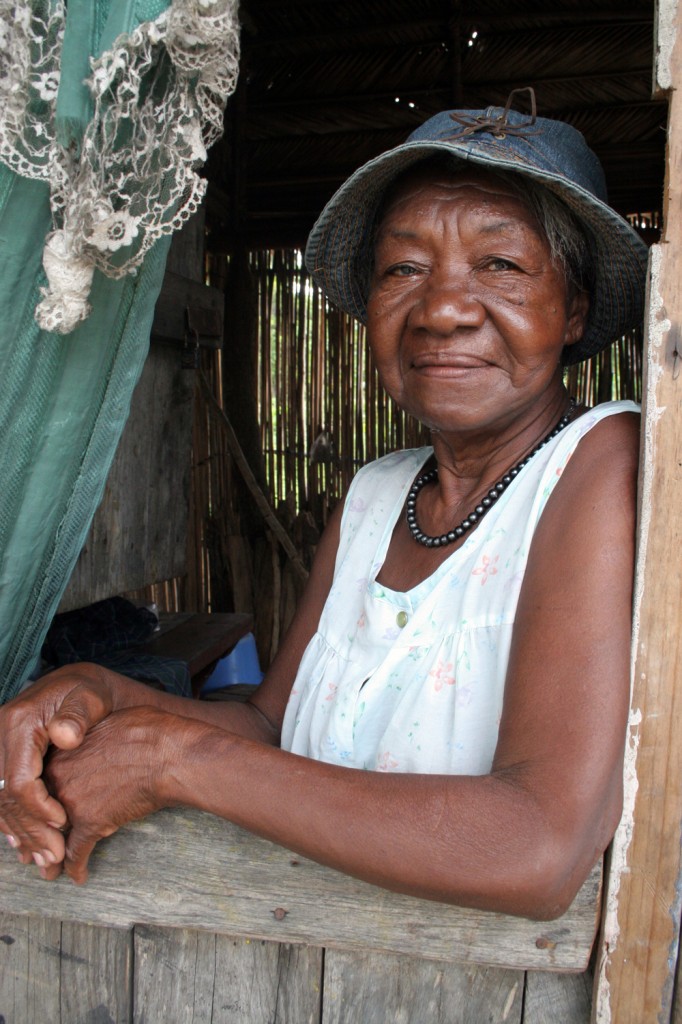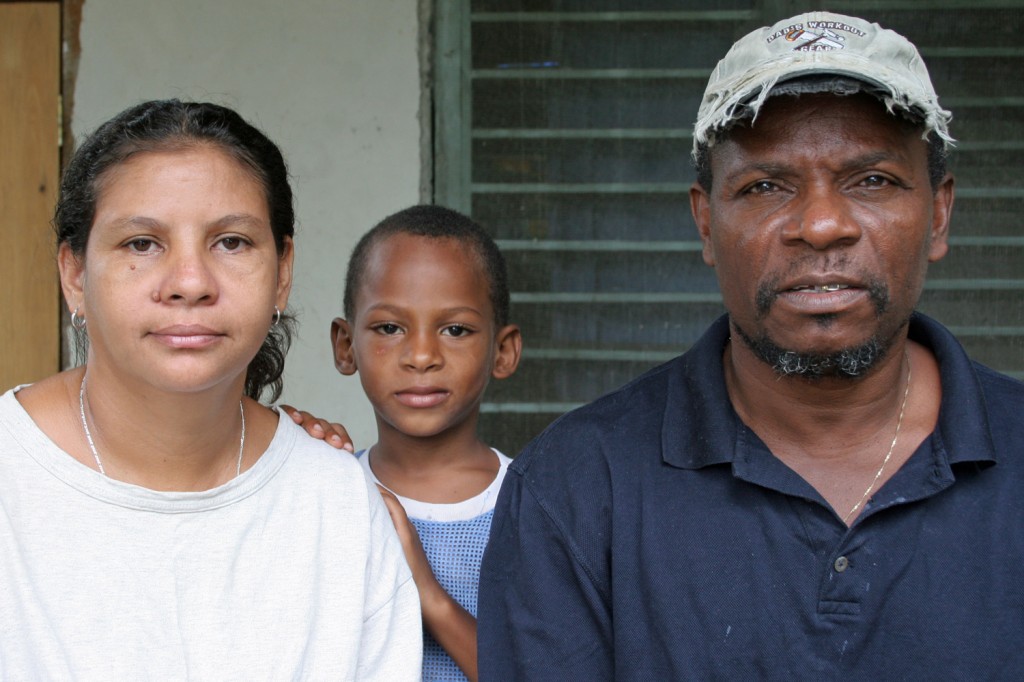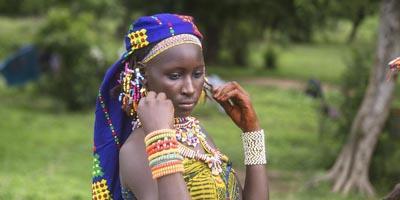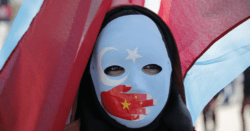Garifuna people have lived in Tela Bay, on the north coast of Honduras, for more than 200 years. The community has high levels of poverty and unemployment and relies on fishing and land cultivation. It suffers from the lack of economic prospects, discrimination, migration and lack of government support. Basic infrastructure and sanitary conditions are poor.

We want to develop an eco-tourism industry which is ours and which will sustain our Garifuna cosmovision and respect the natural environment.”
Photos by James Rodriguez
UNESCO has identified Garifuna culture as an “outstanding but endangered heritage.” There are only 11,000 Garifuna people, descended from African and Amerindian origins, living in ten communities along the coast of Belize, Honduras and Nicaragua. Their language is largely undocumented and not formally taught except in one village.
Now Tela Bay is changing. The Los Micos Beach and Golf Resort has begun construction in the area, supported by the Honduran Ministry of Tourism and the Inter-American Development Bank (IDB), which is funding the project.
“With funding and training, we expect the Garifuna people to have opportunities to develop new businesses, to become entrepreneurs and profit from the arrival of tourism,” Ricardo Martinez, the Honduras Minister of Tourism, said in an interview for this article.
Even so, the Black Fraternal Organization of Honduras (OFRANEH), whose stated aim is to protect the Garifuna’s culture and territory, fears that the resort will lead to the destruction of these local communities. OFRANEH points to recent episodes of violence as examples of repression Garifuna communities face.
For example, one evening in September, 2008, a group of armed men stopped eight local fishermen on a beach in Honduras. There was shooting, and then the fishermen were left to attend to their friend, Guillermo Norales Herrera, as he lay dying, hit by a bullet from an M16, the firearm used by the Honduran Armed Forces. This murder followed the June 5 abduction and beating of Garifuna activist Santos Feliciano Aguilar Alvares by security guards employed by a real estate company.
Two years ago, Garifuna youths Epson Andrés Castillo and Yino Eligio López, were killed. Though military personnel were tried and sentenced for these killings, their superior officer remains unpunished.
OFRANEH argues that these actions are just a few examples of repression and a pattern of impunity for Honduran authorities and armed forces personnel. The General Coordinator of OFRANEH, Miriam Miranda, has claimed that “there are people in the justice system who are partisan and take the side of those who wish to see us abandon the coast where we live.”
In addition to this violence, the Garifunas are denied access to fishing grounds while commercial trawling fleets from the Islas de la Bahia over-fish the area. They have seen their catch plummet, and have been forced to travel further to find food for their families.
Tensions escalated to new levels when the Los Micos Beach and Golf Resort began construction in Tela Bay in 2008. The people who are most affected by the project live in the five surrounding Garifuna communities of Barra Vieja, Miami, San Juan, Tornabe and Triunfo de la Cruz.

Photos by James Rodriguez
The Honduran Ministry of Tourism sees many advantages to the resort development. Tela Bay’s miles of undeveloped Caribbean beach is naturally of interest to the tourism industry, which the government sees as a key sector for development. The idea of making the Tela Bay region into a tourist area first came up in 1969, but the realization of the project started with the current government.
“Most important, of course, is the generation of over 10,000 jobs,” the Minister of Tourism said. As for criticism of the project, he said that “we have studied the consultations of environmentalists, local communities, the government and private sector.”
Ownership of the project is shared, Martinez said, with the Ministry of Tourism owning forty-nine percent and five local communities owning seven percent, with local community groups as partners and members of the project’s board of the directors. He argued that the living standard of locals will be raised by hard currency inflows and economic growth, along with paved roads and improvements to drinking water, electrical power and waste disposal.
The Honduran government has invested in training programs and provided funds to create micro-businesses in the area. According to a survey carried out by the Ministry of Tourism, seventy percent of the affected population is in favour of the project.
A large amount of the financing comes from the Inter-American Development Bank (IDB), of which Canada is a member. In 2005 the IDB provided a “National Sustainable Tourism Program” loan of US$ 4.85 million in support of improving basic infrastructure in Tela Bay.
“The project includes financing to improve conservation of the parks in the Tela Area and to make them sustainable for visits by tourists,” said Sergio Ardial, who was the IDB project officer. “There was also money put into strengthening the administration of the park.”
Both the Honduran government and the IDB say that while planning the project they negotiated with the local Garifuna communities, and the IDB did an environmental and social management assessment as part of the funding process.
“We met with the representatives of each one of the communities in the vicinity of the project at least twice to get from them their concerns, their feelings about the project, what were they expecting to get from the project,” Ardila said. “I think we took as much as possible of all of those concerns into consideration in the design of the project.”
The office of Vinita Watson, the Canadian Executive Director at the IDB responded that it was unable to comment on this project.
OFRANEH claims that the majority of locals are against the project, and that the government took over the Garifuna’s land with little or no compensation.
“The Garífuna community of Cayos Cochinos has had a bitter experience of repression ever since management plans for the region have been put in place,” Miranda said. “The north coast of Honduras has been systematically robbed of its fish stocks by the commercial trawling fleet. Traditional fishers, most of whom are Garífuna, have seen their catch plummet. These protected areas, created without any form of consultation with local communities, have generated tension over resource management. No respect has been shown for traditional Garífuna knowledge, despite the fact that it is this knowledge that has made it possible to conserve most of the lands we live on.”
OFRANEH is also concerned that the project will be harmful to the local ecological system and the three national parks in the area, containing the Micos freshwater lake.
“This is very much our problem in the north because this is a project that Canadians, Americans and Europeans are going to go to,” Graham Russell of Rights Action, a northern NGO, said. “We need to know a lot more about how large scale tourism harms and violates the right of local communities.”
What OFRANEH wants for the region is development controlled by the local communities. They wish to practice small-scale eco-tourism for individuals with small hotels that don’t damage the local communities. OFRANEH is appealing to the government of Honduras to carry out a comprehensive investigation of the incidents described above and for the individuals involved in the assaults and killing be brought to justice. They want Garifuna people to be allowed to fish the area and commercial trawling ended. Finally, they want the land rights of the Garifuna people be respected.
Despite opposition to “Los Micos Beach and Golf Resort,” the construction of the infrastructure began in 2008. Part of Phase one is expected to be completed by the end of 2011.

